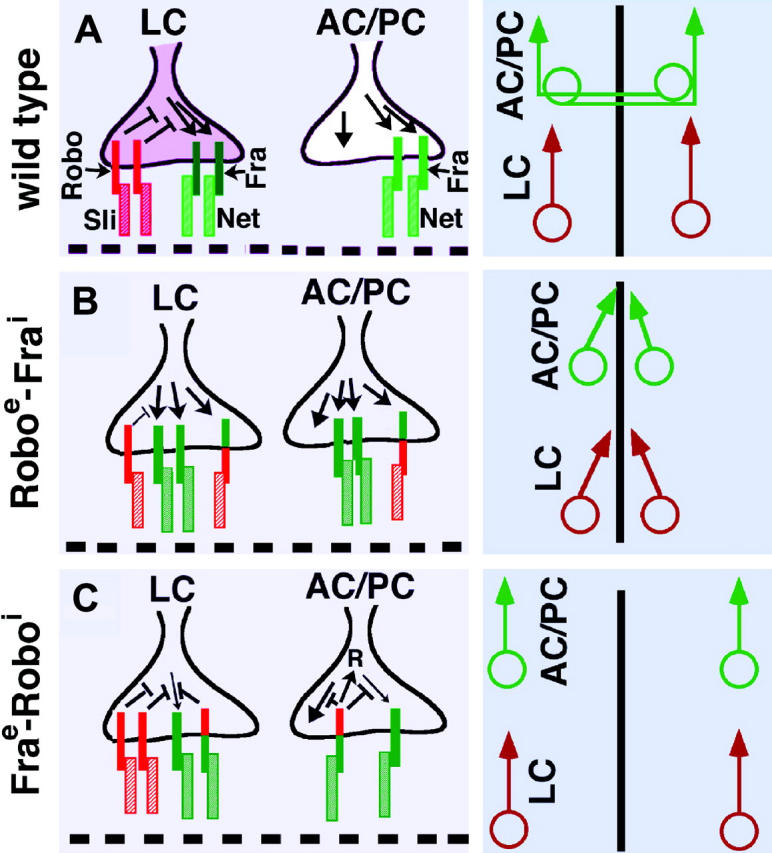Figure 7.—

Interaction between Sli-Robo and net-Fra signaling pathways. (A–C) Schematics of growth cone of longitudinal connective (LC), anterior commissure (AC), and posterior commissure (PC) along with localization of Robo (solid red bar), Sli (hatched red bar), Net (light green bar), and Fra (dark green bar). Midline is marked by a dashed line. (A) In LC, Robo-Sli interaction blocks Net-Fra pathway downstream of Fra. In AC and PC where growth cones project toward the midline, the growth cones lack Robo; thus, Net-Fra pathway is able to mediate attraction. Additional attractant cues must also exist since net or fra mutant embryos do not display a complete commissureless phenotype. (B) In LC, with the pan-neural overexpression of Roboextra-Fraintra, there is a reduction in the neutralizing effect of Net-Fra attraction by Sli-Robo due to the dominant negative effect of the chimeric protein and an increase in the attraction mediated by the Fraintra causing a sli-like phenotype. In AC and PC, there is an enhancement of the attraction due to the chimeric Robo-Fra signaling. (C) In LC, with the pan-neural overexpression of Fraextra-Robointra, the Net-Fra-mediated attraction is negatively affected in two ways: a dominant negative effect and an increase in the neutralizing effect of the attraction. This results in the axon tracts positioned farther away. In AC/PC, not only does the ectopic expression of the chimeric protein neutralize the Net-Fra attraction, but also the Robointra neutralizes the additional attractant cues since the commissureless phenotype is very strong. The commissureless phenotype may also be due to a significant contribution from a Sli-Robo-mediated direct repulsive signaling (see text).
